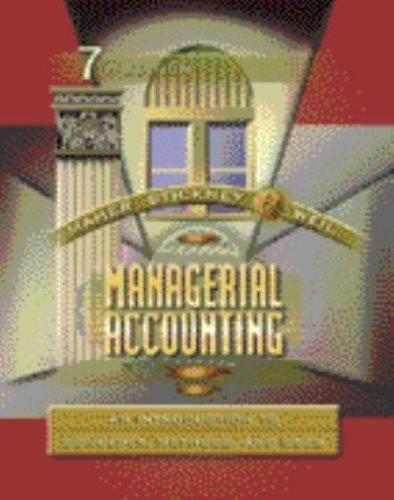

hour. A glass blower blows 10 flanges per hour. Fixed manufacturing costs for flanges are $20,000 per period. Period (nonmarufacturing) costs associated with flanges are $10,000 per period and are fixed. Read the requirements. Requirement 1. Select the graph that shows fixed, variabie, and total manufacturing cost for flanges, using units (number of flanges) on the x-axis. (Enlargo each graph bolore selecting your answer.) Requirement 2. Assume Gwendolyn's Glassworks manufactures and selis 5,000 flanges this period. Its competitor, Flora's Flasks, sels flanges for $8.00 each. Can Gwendalyn sell below Flora's price and stil make a profit on the flanges? (Round the total cost per unit to two decimal places.) Begin by determining the formula used to calculate the total cost per unit. The total cost per unit when manufacturing 5,000 fianges is ; therofore, they sell below Flora's price and still make a profit. Gwendolyn's Glassworks makes glass flanges for scientific use. Materials cost \$1 per flange, and the glass blowers are paid a wage rate of $20 per hour. A glass blower blows 10 flanges per hour. Fixed manufacturing costs for flanges are $20,000 per period. Period (nonmanufacturing) costs associated with flanges are $10,000 per period and are fixed. Read the reguirements. Requirement 2. Assume Gwendolyn's Glassworks manufactures and sells 5,000 flanges this period, Its competitor, Flora's Flasks, sells flanges for $8,00 each. Can Gwendolyn sell below Flora's price and stil make a profit on the flanges? (Round the total cost per unit to two decimal places.) Begin by determining the formula used to calculate the total cost per unit. The total cost per unit when manufacturing 5,000 flanges is Flora's price and still make a profit. ; therefore, they sell below Requirement 3. How would your answer to requirement 2 differ if Gwendolyn's Glassworks made and sold 12,000 flanges this period? Why? What does this indicate about the use of unit cost in decision making? (Round the total cost per unit to two decimal places.) The total cost per unit when manufacturing 12,000 flanges would be With production and sales at this level, the company cautious using unit costs for decision making because make a profit if the selling price is below $8.00 each. Managers must be remain the same regardless of the number of units produced








